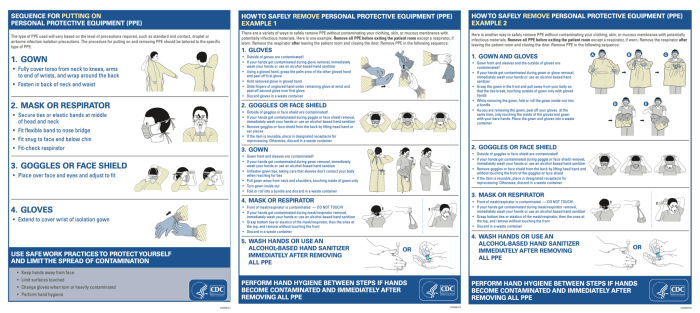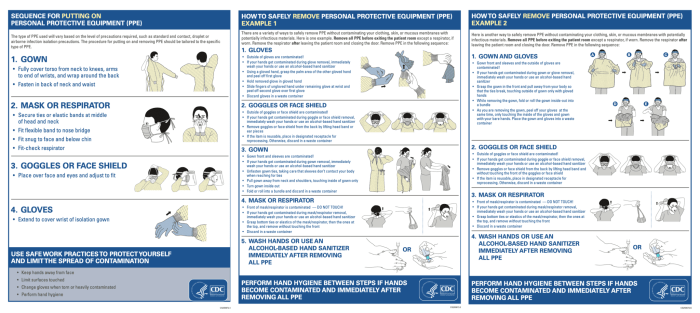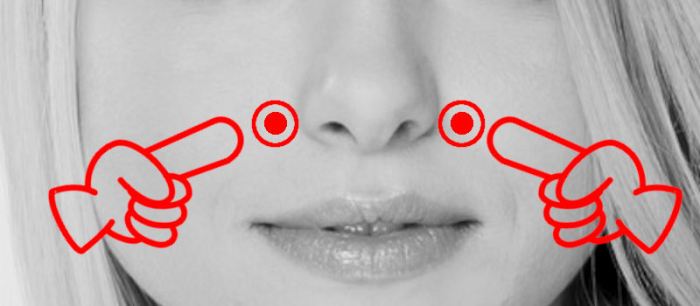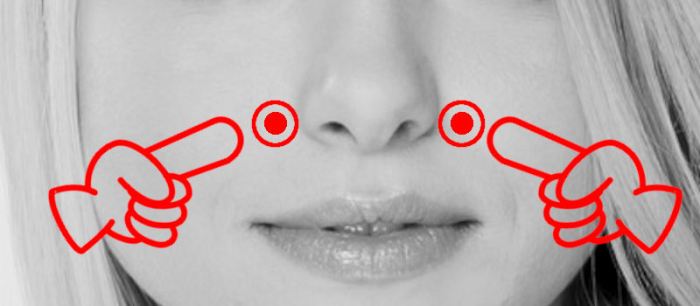How to improve gut health is a journey towards better overall well-being. A healthy gut is more than just digestion; it plays a crucial role in everything from immunity to mental clarity. This comprehensive guide explores the key aspects of gut health, from dietary choices and lifestyle factors to supplements and potential conditions. We’ll delve into the fascinating world of the gut microbiome and how it impacts your health.
This guide covers everything from the importance of a balanced diet rich in fiber and prebiotics, to the impact of stress, exercise, and sleep. You’ll discover practical tips and strategies for incorporating gut-friendly habits into your daily routine, and learn about potential gut health conditions and how to manage them effectively. We also explore the role of supplements, including probiotics and prebiotics, and provide actionable steps to take control of your gut health.
Diet and Nutrition
A healthy gut microbiome is intricately linked to overall well-being. Nourishing your gut with the right foods is crucial for supporting its diverse population of beneficial bacteria. A diet rich in specific nutrients and fiber, combined with a balanced approach to macronutrients, can significantly improve gut health and contribute to a stronger immune system.
Foods That Promote Gut Health
A diverse diet rich in fiber, prebiotics, and probiotics is essential for a thriving gut microbiome. These foods provide nourishment for beneficial bacteria, promoting a healthy balance and supporting digestive function.
- High-Fiber Foods: Fruits, vegetables, legumes, and whole grains are excellent sources of dietary fiber. Fiber acts as a prebiotic, feeding the beneficial bacteria in your gut. This fermentation process produces short-chain fatty acids (SCFAs), crucial for gut health and overall well-being. Examples include apples, broccoli, beans, and oats.
- Prebiotic Foods: Prebiotics are non-digestible fibers that selectively stimulate the growth and activity of beneficial bacteria in the colon. These include onions, garlic, asparagus, leeks, and bananas. These foods encourage the growth of beneficial gut bacteria, which is essential for optimal digestion and overall health.
- Probiotic Foods: Probiotics are live microorganisms, similar to those found in your gut, that offer numerous health benefits. Yogurt, kefir, sauerkraut, kimchi, and kombucha are excellent sources of probiotics. They introduce beneficial bacteria directly into your digestive system, helping to restore and maintain a healthy gut flora.
Importance of a Balanced Diet
A balanced diet that includes a variety of foods from different food groups is vital for maintaining a healthy gut microbiome. It ensures that the gut receives the necessary nutrients to support a thriving and diverse population of beneficial bacteria. This diversity is essential for optimal digestion, nutrient absorption, and immune function.
Role of Macronutrients
Macronutrients, including proteins, carbohydrates, and fats, play essential roles in gut health. A balanced intake of each macronutrient is crucial for supporting a healthy gut environment.
- Proteins: Proteins are essential for the growth and repair of tissues, including those lining the digestive tract. Lean meats, poultry, fish, beans, and lentils are excellent sources of protein. Protein supports a healthy gut lining and aids in digestion.
- Carbohydrates: Carbohydrates provide energy for the body, and fiber is a type of carbohydrate crucial for gut health. Choose complex carbohydrates like whole grains, fruits, and vegetables over simple sugars to maintain optimal gut health.
- Fats: Healthy fats, such as those found in avocados, nuts, and seeds, are important for nutrient absorption and gut barrier function. These fats support a healthy gut lining, which is crucial for preventing inflammation and infections.
Dietary Patterns for Gut Health, How to improve gut health
Different dietary patterns can support gut health in unique ways. A balanced and varied approach is often the most effective strategy.
- Mediterranean Diet: The Mediterranean diet emphasizes fruits, vegetables, whole grains, legumes, and healthy fats, like olive oil. It’s rich in fiber and antioxidants, promoting gut health and reducing inflammation. This diet is associated with lower risks of various diseases and improved overall health.
- Vegetarian Diet: A well-planned vegetarian diet can be highly beneficial for gut health. It often emphasizes plant-based sources of protein, fiber, and prebiotics. A vegetarian diet rich in legumes, fruits, and vegetables can support a healthy gut microbiome.
Sample Weekly Meal Plan
This sample meal plan emphasizes gut-friendly foods, providing a balanced intake of nutrients and fiber. It can be adapted to individual needs and preferences.
- Monday: Oatmeal with berries and nuts, lentil soup, salad with grilled chicken.
- Tuesday: Quinoa bowl with roasted vegetables, hummus and whole-wheat pita, and a side salad.
- Wednesday: Baked salmon with asparagus and brown rice, Greek yogurt with fruit.
- Thursday: Lentil stew with whole-wheat bread, mixed green salad with avocado dressing.
- Friday: Chicken stir-fry with brown rice and plenty of vegetables, kefir.
- Saturday: Vegetarian chili with cornbread, a side salad with a light vinaigrette.
- Sunday: Breakfast smoothie with fruits, spinach, and protein powder, a hearty vegetable and bean soup, and whole-wheat bread.
Fiber and Prebiotic Content Comparison
This table compares the fiber content and prebiotic properties of different fruits and vegetables. It highlights the variety of foods available to support a healthy gut.
| Food | Fiber Content (grams per 100g) | Prebiotic Properties |
|---|---|---|
| Apples | 2.2 | Moderate |
| Broccoli | 2.8 | High |
| Bananas | 1.5 | Moderate |
| Asparagus | 2.4 | High |
| Onions | 1.0 | High |
Lifestyle Factors
Nourishing your gut health isn’t solely about diet; a holistic approach encompassing lifestyle choices plays a vital role. Stress, exercise, sleep, and hydration all significantly impact the delicate ecosystem within your gut. Understanding these connections can empower you to make informed choices that promote a thriving gut microbiome.
Stress and Gut Health
Chronic stress triggers the release of hormones like cortisol, which can negatively affect gut barrier function and alter the composition of the gut microbiota. This disruption can lead to increased intestinal permeability, making you more susceptible to digestive issues and even impacting overall health. Managing stress through techniques like mindfulness, yoga, or spending time in nature can help restore balance.
These practices can reduce cortisol levels and promote a healthier gut environment.
Regular Exercise and Gut Health
Regular physical activity is crucial for overall well-being, and its impact extends to gut health. Exercise can positively influence gut microbiota diversity and abundance, potentially leading to improved digestion and reduced inflammation. Different types of exercise may have varying effects, as discussed later in the section on exercise types.
Sleep and Gut Health
Adequate sleep is essential for gut health. During sleep, the body repairs and restores, including the gut lining. Sleep deprivation can disrupt the balance of gut bacteria, potentially increasing the risk of digestive issues and other health problems. Aiming for 7-9 hours of quality sleep per night can support a healthier gut environment.
Hydration and Gut Function
Proper hydration is vital for gut health. Water is crucial for transporting nutrients, removing waste, and lubricating the digestive tract. Dehydration can lead to constipation and other digestive issues. Consuming enough water and other fluids throughout the day is essential for optimal gut function.
Effects of Different Exercise Types on Gut Microbiota
Aerobic exercises, such as running or swimming, may lead to changes in gut microbiota composition compared to resistance training. Aerobic exercise has been associated with an increase in beneficial bacteria, while resistance training might lead to different responses depending on the intensity and duration.
Gut Health and Mental Well-being
Emerging research suggests a strong link between gut health and mental well-being. The gut-brain axis, a complex network connecting the digestive system to the central nervous system, plays a key role in this relationship. Maintaining a healthy gut microbiome could contribute to improved mood and reduced symptoms of anxiety and depression.
Recommended Daily Intake of Water and Other Fluids
| Age Group | Recommended Daily Intake (Liters) |
|---|---|
| Infants (0-6 months) | 0.6-0.8 |
| Infants (6-12 months) | 0.8-1 |
| Toddlers (1-3 years) | 1-1.3 |
| Preschoolers (3-5 years) | 1.3-1.5 |
| Children (6-8 years) | 1.5-1.8 |
| Children (9-13 years) | 1.8-2 |
| Adolescents (14-18 years) | 2-2.5 |
| Adults | 2.7-3.7 |
| Pregnant Women | 2.7-3.7 (increased needs) |
| Breastfeeding Women | 2.7-3.7 (increased needs) |
Note: These are general guidelines. Individual needs may vary based on activity level, climate, and overall health.
Supplements and Probiotics
Nourishing your gut with supplements can be a helpful strategy in conjunction with dietary changes and lifestyle adjustments. While food is the primary source of beneficial bacteria and nutrients, supplements can play a supportive role in promoting gut health, particularly for individuals facing specific challenges or seeking targeted improvements. However, it’s crucial to approach supplements with caution, understanding their potential benefits and risks.Supplementing your diet with specific compounds like probiotics and prebiotics can help support the gut microbiome, a complex ecosystem of bacteria, fungi, and other microorganisms that play a critical role in digestion, immunity, and overall well-being.
Understanding the differences between prebiotics and probiotics, and their individual roles, is essential for making informed choices.
Types of Gut Health Supplements
Various supplements can aid in supporting gut health. Prebiotics, probiotics, and digestive enzymes are common examples. Prebiotics are non-digestible food ingredients that selectively stimulate the growth and/or activity of beneficial bacteria in the colon. Probiotics are live microorganisms that, when consumed in adequate amounts, confer a health benefit on the host. Digestive enzymes assist in the breakdown of food, potentially easing digestive discomfort.
Probiotic Supplements: Benefits and Risks
Probiotic supplements offer the potential to introduce beneficial bacteria into the gut. These bacteria can help restore a balanced gut microbiome, improve digestion, boost immunity, and potentially reduce symptoms of certain conditions. However, it’s important to be aware of potential risks. Some individuals may experience mild side effects like bloating, gas, or diarrhea. Probiotic strains can vary significantly in their efficacy and benefits.
It is crucial to choose a reputable brand and follow recommended dosages.
Reputable Probiotic Brands and Features
Choosing a reputable brand of probiotic supplements is important. Several brands offer high-quality products with well-researched strains. Key features to consider include the specific strains of bacteria included, the number of colony-forming units (CFUs) per serving, and the overall quality of the supplement. Look for brands with third-party testing and certifications, ensuring purity and potency.
- Culturelle: Known for its Lactobacillus GG strain, a commonly researched probiotic with potential benefits for digestive health.
- Renew Life: Offers a wide range of probiotic formulas targeting various gut health concerns, often including multiple strains.
- Jarrow Formulas: Focuses on scientific research and offers a variety of probiotic supplements with specific strains and dosages.
Prebiotics vs. Probiotics
Prebiotics and probiotics are distinct but complementary approaches to gut health. Prebiotics are non-living food fibers that act as food for beneficial bacteria. Probiotics are living microorganisms that contribute to the gut flora. The relationship between them is synergistic, with prebiotics providing nourishment for the growth and activity of probiotics.
Recommended Dosage and Usage
The recommended dosage of probiotic supplements can vary significantly depending on the specific product and the individual’s needs. It is essential to consult product labeling and, if necessary, a healthcare professional to determine the appropriate dosage. Typically, supplements are taken with or without food, as per the manufacturer’s instructions.
Incorporating Prebiotics into Your Diet
Prebiotics are found naturally in many foods. Incorporating these foods into your diet can contribute to a healthy gut microbiome. Examples include:
- Asparagus: Rich in inulin, a type of prebiotic fiber.
- Bananas: Contain fructooligosaccharides (FOS), a type of prebiotic.
- Onions: Contain fructans, another type of prebiotic fiber.
Comparison of Probiotic Strains
Different probiotic strains exhibit varying degrees of efficacy for different gut health outcomes. A comparative analysis of probiotic strains can provide insights into their potential benefits and drawbacks.
| Probiotic Strain | Potential Benefits | Potential Drawbacks |
|---|---|---|
| Lactobacillus acidophilus | Improved digestion, reduced lactose intolerance | May not be effective for all individuals |
| Bifidobacterium bifidum | Enhanced immune function, improved digestion | Potential for mild side effects in some |
| Lactobacillus rhamnosus | Reduced inflammation, improved immunity | Variability in effectiveness across individuals |
Gut Health Conditions and Management

Understanding and managing gut health conditions requires a multifaceted approach. Beyond dietary choices and lifestyle factors, recognizing the specific conditions and their management is crucial. This section delves into common gut health issues, their potential triggers, and the importance of professional guidance in their management.Common gut health conditions like Irritable Bowel Syndrome (IBS), Inflammatory Bowel Disease (IBD), and Small Intestinal Bacterial Overgrowth (SIBO) can significantly impact quality of life.
Effective management involves a comprehensive understanding of these conditions, including their causes, symptoms, and dietary interventions.
Common Gut Health Conditions
Gut health conditions manifest in diverse ways, affecting individuals differently. Understanding the spectrum of symptoms is essential for early detection and appropriate management. Recognizing the underlying causes and potential triggers is equally crucial for developing effective strategies to prevent or mitigate their impact.
Boosting gut health is all about a balanced diet and lifestyle choices. One crucial nutrient to consider is zinc, which plays a vital role in supporting a healthy gut microbiome. Understanding the health benefits of zinc, like its role in immune function and digestion, can help you make informed choices about your diet and supplementation. This knowledge is key to maintaining a thriving gut ecosystem.
To learn more about how zinc contributes to overall health, check out this helpful article on the health benefits of zinc. health benefits of zinc. Ultimately, a holistic approach, incorporating these factors, will help you achieve optimal gut health.
Causes and Symptoms of Common Gut Issues
Various factors can contribute to the development of gut health problems. Genetic predisposition, environmental triggers, and certain medications can all play a role. The specific symptoms associated with each condition vary, but common complaints include abdominal pain, bloating, diarrhea, and constipation. For instance, IBS is often characterized by intermittent pain, altered bowel habits, and gas. Inflammatory bowel disease, like Crohn’s disease or ulcerative colitis, typically presents with chronic inflammation and digestive issues.
SIBO, on the other hand, involves an overgrowth of bacteria in the small intestine, leading to symptoms such as bloating, gas, and diarrhea.
Dietary Interventions in Managing Gut Health Conditions
Dietary modifications can significantly impact the management of gut health conditions. For example, individuals with IBS may benefit from a low-FODMAP diet, which restricts fermentable carbohydrates. Similarly, those with IBD may find that reducing inflammatory foods, such as processed foods, and increasing anti-inflammatory foods, such as fruits and vegetables, can be beneficial. Carefully designed dietary interventions under the guidance of a healthcare professional are essential for optimal outcomes.
A personalized approach tailored to the specific condition and individual needs is critical.
Consulting with a Healthcare Professional
A crucial aspect of managing gut health conditions is consulting with a healthcare professional. Diagnosis and treatment plans should always be developed in collaboration with a gastroenterologist or other qualified medical professional. They can accurately assess symptoms, order necessary tests, and recommend appropriate interventions. This individualized approach is vital to addressing the root cause of the condition and tailoring a management plan for long-term well-being.
Regular Check-ups and Screenings for Gut Health
Regular check-ups and screenings are essential for maintaining gut health and early detection of potential issues. Routine examinations, including colonoscopies and endoscopies, can help identify and address conditions early, potentially preventing complications. The frequency of these screenings depends on individual risk factors and medical history.
Resources for Qualified Healthcare Professionals
Finding qualified healthcare professionals specializing in gut health can be beneficial. Resources like the National Institute of Diabetes and Digestive and Kidney Diseases (NIDDK) website and local gastroenterology societies can provide valuable information and directories of specialists in your area. Your primary care physician can also provide referrals.
Summary of Common Gut Health Conditions and Potential Triggers
| Condition | Potential Triggers | Symptoms |
|---|---|---|
| Irritable Bowel Syndrome (IBS) | Stress, certain foods (e.g., FODMAPs), medications | Abdominal pain, bloating, altered bowel habits |
| Inflammatory Bowel Disease (IBD) | Genetics, environmental factors, immune system dysfunction | Chronic inflammation, diarrhea, abdominal pain |
| Small Intestinal Bacterial Overgrowth (SIBO) | Slowed gastric emptying, weakened stomach acid production, certain medical conditions | Bloating, gas, diarrhea |
Gut Microbiome and its Impact

The gut microbiome, a complex community of microorganisms residing in our digestive tract, plays a crucial role in our overall health. It’s more than just a collection of bacteria; it’s a dynamic ecosystem influencing everything from digestion to immunity. Understanding this intricate community and its interactions is key to maintaining optimal health and preventing disease.The gut microbiome is a complex ecosystem containing trillions of microorganisms, primarily bacteria, but also fungi, viruses, and archaea.
This diverse community plays a crucial role in various bodily functions. These microorganisms perform essential tasks like breaking down indigestible fibers, producing vitamins (like vitamin K and some B vitamins), and protecting against harmful pathogens.
Composition and Function of the Gut Microbiome
The gut microbiome’s composition varies significantly among individuals, influenced by factors like genetics, diet, and environment. The dominant bacterial phyla include Bacteroidetes and Firmicutes, each with specific metabolic functions. The intricate balance of these microbial species is crucial for maintaining a healthy gut. This balance, often referred to as the gut microbiome’s diversity, is a key indicator of its overall health.
Focusing on gut health is crucial for overall well-being. A balanced diet rich in fiber and probiotics is key. However, it’s important to remember that factors like blood pressure can indirectly affect gut health, and conversely, gut health can affect blood pressure. If you’re interested in learning more about how to increase blood pressure, check out this helpful resource: how to increase blood pressure.
Ultimately, maintaining a healthy gut requires a multifaceted approach, incorporating proper nutrition and lifestyle choices. So, keep those gut bacteria happy!
Role of the Gut Microbiome in Overall Health
The gut microbiome’s influence extends far beyond digestion. It plays a vital role in nutrient absorption, immune system development, and even brain function. Its metabolic activities influence the production of essential metabolites, which in turn affect various bodily processes. For instance, short-chain fatty acids (SCFAs) produced by gut bacteria are important energy sources for the colon and have anti-inflammatory properties.
Focusing on a healthy gut is crucial for overall well-being. Eating fermented foods and incorporating prebiotics into your diet can significantly improve gut health. However, sometimes oral health issues like calcium deposits on teeth calcium deposits on teeth can indirectly affect your gut. This is because oral health often gets overlooked, when in fact, it plays a surprisingly important role in gut health.
So, let’s remember to brush and floss regularly to ensure a healthy mouth and a healthy gut!
Gut Microbiome and the Immune System
The gut microbiome interacts closely with the immune system. The immune system’s development is heavily influenced by the presence and types of microorganisms in the gut. The microbiome trains the immune system to distinguish between beneficial and harmful substances. This interaction is critical for preventing autoimmune diseases and maintaining a healthy immune response. A disrupted microbiome can lead to an imbalance in the immune system, potentially increasing the risk of allergies and inflammatory diseases.
Impact of Diet on the Gut Microbiome
Diet significantly influences the composition and function of the gut microbiome. High-fiber diets, rich in fruits, vegetables, and whole grains, promote the growth of beneficial bacteria. Conversely, diets high in processed foods, refined sugars, and saturated fats can negatively impact the microbiome’s balance. Dietary changes can alter the abundance of specific microbial species within a short time frame.
Factors Disrupting Gut Microbiome Balance
Several factors can disrupt the delicate balance of the gut microbiome, including antibiotic use, stress, and certain medical conditions. Antibiotics, while effective against bacterial infections, can also eliminate beneficial bacteria, leading to dysbiosis (an imbalance in the gut microbiota). Chronic stress can alter gut microbial composition and function, potentially impacting overall health. Moreover, specific medical conditions, such as inflammatory bowel disease (IBD), can significantly alter the gut microbiome, creating a vicious cycle of disease and dysbiosis.
Gut Microbiome and Disease
Emerging research highlights the connection between the gut microbiome and various diseases, including obesity, type 2 diabetes, and mental health disorders. An imbalanced gut microbiome has been linked to increased inflammation, which is a common thread in many chronic diseases. Research suggests that the gut microbiome plays a role in the development of these conditions by influencing metabolic processes and immune responses.
Journey of Food Through the Digestive System
| Stage | Process | Impact on Gut Microbiome |
|---|---|---|
| Ingestion | Food enters the mouth | Initial exposure to microorganisms |
| Digestion (Stomach) | Food is broken down | Acidic environment affects microbial composition |
| Small Intestine | Nutrient absorption | Selective microbial growth influenced by nutrients |
| Large Intestine | Water absorption, fermentation | Significant microbial activity, SCFA production |
| Elimination | Waste removal | Microorganisms continue to interact with remaining substances |
The journey of food through the digestive system directly influences the composition and activity of the gut microbiome at each stage. This illustrates the complex interplay between diet, digestion, and the gut’s microbial inhabitants.
Practical Tips and Strategies: How To Improve Gut Health
Taking control of your gut health is a journey, not a sprint. This section provides practical steps and strategies to integrate healthy gut habits into your daily routine, fostering gradual improvements over time. Remember consistency is key to achieving long-term results.Understanding that consistent effort is vital, the following sections offer actionable advice, including dietary adjustments, lifestyle modifications, and monitoring techniques to track your progress.
Actionable Steps Checklist
A structured approach to improving gut health can significantly enhance your well-being. This checklist provides a framework for incorporating actionable steps into your daily life, helping you make sustainable changes.
- Increase Fiber Intake Gradually: Start by adding fiber-rich foods like fruits, vegetables, and whole grains to your diet, gradually increasing the amount to avoid digestive discomfort. Pay attention to how your body reacts and adjust accordingly.
- Prioritize Probiotic-Rich Foods: Incorporate fermented foods like yogurt, kefir, sauerkraut, and kimchi into your diet. These foods contain beneficial bacteria that support a healthy gut microbiome.
- Hydrate Regularly: Drink plenty of water throughout the day. Water aids digestion and helps maintain a healthy gut environment.
- Limit Processed Foods and Sugary Drinks: Processed foods and sugary drinks often contain ingredients that can negatively impact gut health. Reducing or eliminating these from your diet can significantly improve your gut microbiome.
- Manage Stress Levels: Stress can negatively impact the gut-brain axis. Engage in stress-reducing activities such as yoga, meditation, or spending time in nature.
- Get Adequate Sleep: Adequate sleep is crucial for overall health, including gut health. Aim for 7-9 hours of quality sleep each night.
Strategies for Incorporating Gut-Healthy Habits
Creating a consistent routine for gut health involves incorporating healthy habits into your daily schedule. This section details practical strategies to achieve long-term improvements.
- Meal Prep: Plan your meals for the week ahead, ensuring you have healthy gut-friendly options readily available. This reduces the temptation to resort to less healthy choices when time is limited.
- Portion Control: Be mindful of portion sizes. Overeating can lead to digestive issues. Use smaller plates and bowls to manage portions.
- Mindful Eating: Pay attention to your body’s hunger and fullness cues. Eat slowly and savor each bite.
- Choose Nutrient-Dense Foods: Prioritize nutrient-rich foods over processed or overly-refined options.
- Incorporate Regular Physical Activity: Exercise is beneficial for gut health. Aim for at least 30 minutes of moderate-intensity exercise most days of the week.
Gradual Changes to Diet and Lifestyle
Making significant changes to your diet and lifestyle can be challenging. Focus on gradual changes to avoid overwhelming yourself.
- Start Small: Introduce one or two new gut-healthy habits each week. This allows your body to adjust and prevents burnout.
- Be Patient: Improvements in gut health take time. Be patient with yourself and celebrate small victories along the way.
- Seek Professional Guidance: If you have specific concerns or conditions, consult a healthcare professional for personalized advice.
Tracking Gut Health Improvements
Monitoring your progress is essential to gauge the effectiveness of your strategies. Tracking your progress allows for adjustments and provides motivation.
- Food Journal: Record what you eat and drink each day. Note how you feel after consuming specific foods.
- Symptom Tracking: Keep a journal of any digestive symptoms, such as bloating, gas, or constipation. Track the frequency and severity of these symptoms.
- Monitor Energy Levels: Note how you feel throughout the day. Improvements in energy levels can be a sign of a healthier gut.
Reliable Information Resources
Access reliable resources for in-depth information about gut health.
- Reputable Medical Websites: Look for information from well-respected medical organizations and universities.
- Registered Dietitians: Consult with registered dietitians for personalized dietary advice.
- Books and Articles: Read books and articles from reputable authors specializing in gut health.
Simple Exercise Routine for Gut Health
Exercise positively impacts gut health by promoting blood flow and stimulating the digestive system. This simple routine focuses on low-impact exercises.
- Walking: Aim for at least 30 minutes of brisk walking most days of the week.
- Yoga: Practice gentle yoga poses to improve digestion and reduce stress.
- Swimming: Swimming is a low-impact exercise that can promote gut health.
Quick and Easy Gut-Friendly Recipes
These recipes offer simple and delicious options to incorporate gut-friendly ingredients into your diet.
- Overnight Oats: Combine rolled oats, milk (dairy or non-dairy), chia seeds, and your favorite fruits for a quick and nutritious breakfast.
- Roasted Vegetables: Roast colorful vegetables like broccoli, carrots, and sweet potatoes with herbs and spices.
- Lentil Soup: Lentils are a great source of fiber and protein. Create a flavorful lentil soup with vegetables.
- Fermented Vegetable Salad: Combine fermented vegetables like sauerkraut or kimchi with a variety of greens and other vegetables for a healthy and delicious meal.
Final Wrap-Up
In conclusion, achieving and maintaining a healthy gut is a multifaceted endeavor. By focusing on diet, lifestyle choices, and understanding the role of the gut microbiome, you can significantly improve your overall health and well-being. This guide provides a roadmap to navigate the complex world of gut health, equipping you with the knowledge and tools to take proactive steps toward a healthier, happier you.
Remember, consistency and a holistic approach are key to lasting results.




























